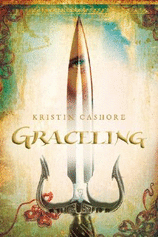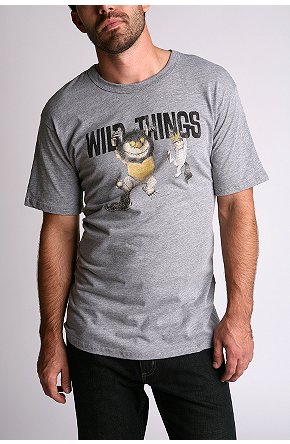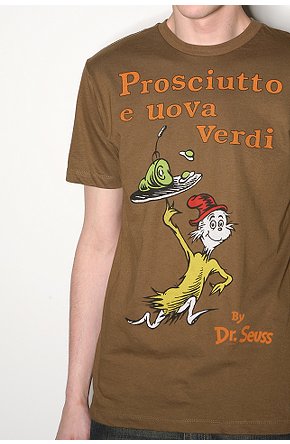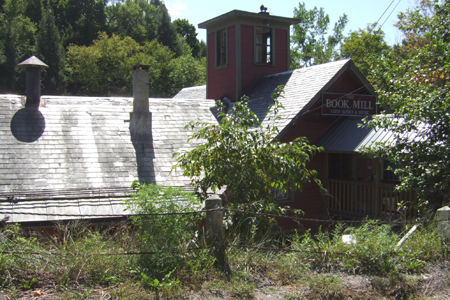 I love the intoxicating feeling of falling in love with a good book, and I love talking with others who’ve been just as captivated by the same reading experience. In the past few weeks I have had several gushing/bonding sessions with booksellers and librarians who, like me, have fallen under the spell of Graceling by Kristin Cashore. I know for a fact that I am not the only one who was COMPLETELY and utterly swept away by the fantastic adventure on this book’s pages and wonderfully, blissfully seduced by its romance.
I love the intoxicating feeling of falling in love with a good book, and I love talking with others who’ve been just as captivated by the same reading experience. In the past few weeks I have had several gushing/bonding sessions with booksellers and librarians who, like me, have fallen under the spell of Graceling by Kristin Cashore. I know for a fact that I am not the only one who was COMPLETELY and utterly swept away by the fantastic adventure on this book’s pages and wonderfully, blissfully seduced by its romance.
It’s been a long time since I read a book in which the sexual tension between its two main characters was so deliriously exhilarating as it is in this one. It was a complete and utter delight watching Katsa, a headstrong girl "graced" with a talent for killing, fall for Po, a level-headed, kind-hearted guy who can crack wise in the best of spirits. So charmed was I by their witty, tension-filled banter that I was almost sorry to see them eventually give in to their passions and discover their love for one another. I say almost, because there was little time to feel disappointed. Mere pages after the story’s buoyant sexual tension takes a dip, the tensions in the story’s overarching plot take over and send readers barrelling their way to the finish, where plenty of surprises remain in store.
I could go on and on about the reasons I loved this novel, but what I’d rather do here is ask you to ponder this: Based on the expectations set for us by other young adult authors, can we expect Kristin Cashore’s next novel (a companion to Graceling) to be just as good as this, her first?
I ask this question because soon after I’d first fallen under Graceling‘s spell I remarked to Gareth that, because the book is so good, I couldn’t believe it was Kristin Cashore’s first novel. He responded with the frequently made observation that an author’s first novel is often their best, at which point I looked at him askance, the wheels in my head spinning furiously. I don’t suppose I’d ever stopped to think about this "first book = best" notion in relation to children’s and young adult books before, but hearing it applied directly to a young adult novel I was enjoying got me thinking about all the others I’ve loved and how many of them were from first-time authors versus veterans. In the end I reached this conclusion: whether or not it’s often true that an "adult" author’s first novel tends to be their best, I DON’T think that’s the norm in the world of novels for young adults and children. It happens… but not often.
The matter of time invested in any writing project could have something to do with this. If you spend many years honing the language and pruning the plot of your one big novel, it stands to reason that you’re going to pour a lot of energy and expertise into the one investment — you’re going to grow as a writer over the course of those 800 pages, just as a children’s writer is going to grow after writing four books at 200 pages a pop. But many children’s and young adult authors take a long time to create their first work too, and that doesn’t necessarily mean that it’s going to outshine their others later down the line.
Does anyone believe that the first novel written by M.T. Anderson (The Game of Sunken Places) exceeds the quality of his more recent works? I don’t doubt that Geraldine McCaughrean’s first few books paled in comparison to her award-winning The White Darkness, the brilliant Cyrano, or Peter Pan in Scarlet. Sharon Creech’s first novel was Absolutely Normal Chaos and Jerry Spinelli’s Space Station Seventh Grade. Their best? Not in my opinion.
I don’t diversify my adult reading enough these days to take a stab at the "first novel = best" rule and see if it still largely applies in the world of writing for adults. Maybe it’s time we scrapped the stereotype altogether?
Whatever the case on that end, I’m curious to hear your thoughts on this one. Are you often wowed by a children’s or YA author’s debut novel then disappointed by those that follow, or do you think those novellists who start strong usually get even stronger? Could you please share some examples? And please also make a point of reading Graceling!

















 Last Friday I left the
Last Friday I left the 







































 Today I give you a book excerpt that contains some very entertaining advice for writers. What follows are the first two paragraphs of the second chapter of
Today I give you a book excerpt that contains some very entertaining advice for writers. What follows are the first two paragraphs of the second chapter of